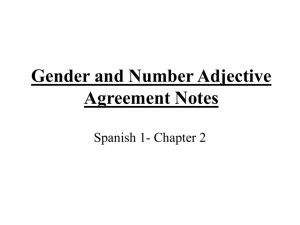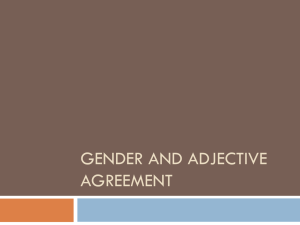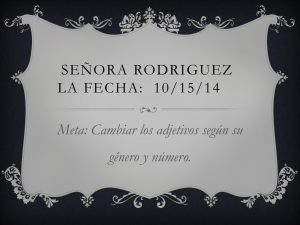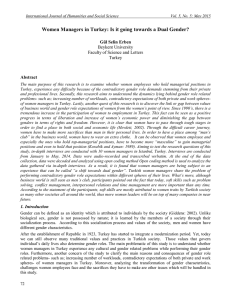L1B note
advertisement
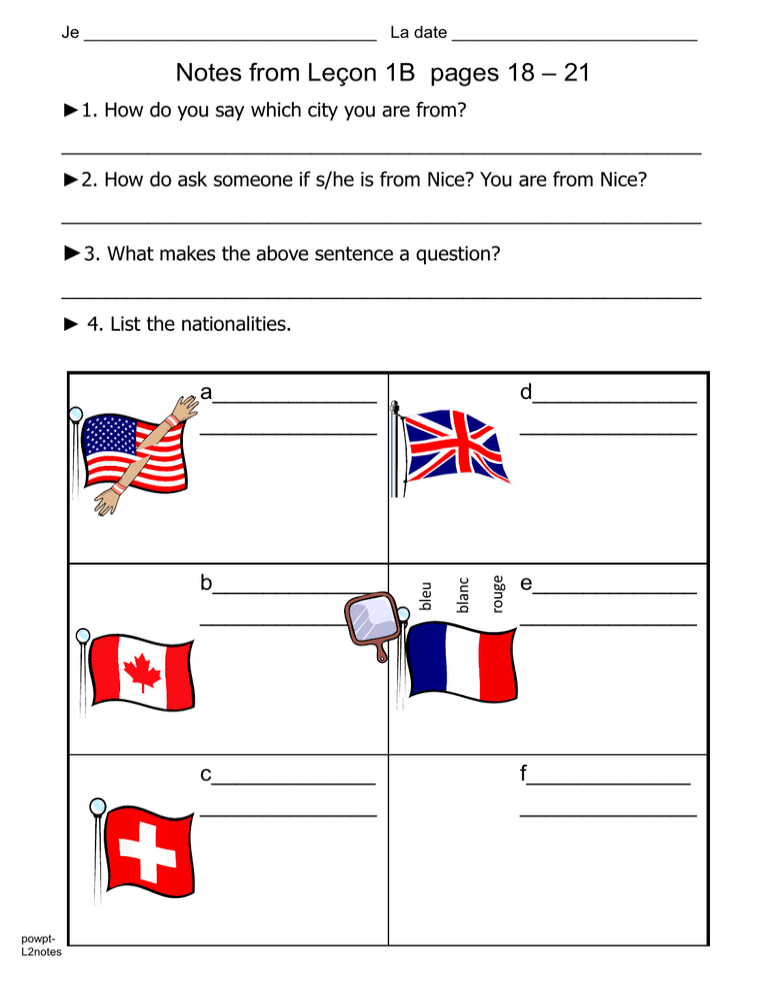
Je _______________________________ La date __________________________ Notes from Leçon 1B pages 18 – 21 ►1. How do you say which city you are from? ___________________________________________________________ ►2. How do ask someone if s/he is from Nice? You are from Nice? ___________________________________________________________ ►3. What makes the above sentence a question? ___________________________________________________________ ► 4. List the nationalities. e_____________ ______________ c_____________ ______________ powptL2notes rouge b_____________ ______________ blanc d_____________ ______________ bleu a_____________ ______________ f_____________ ______________ ►5. What do you do when a masculine nationality word end in “en”? ________________________ Example 1______________________ ► 6. How do you tell someone you are American? ________________________________________________________ ► 7. How do you ask someone if she(!) is French? ________________________________________________________ ► 8. How do you ask someone if he(!) is English? ________________________________________________________ ► 9. Translate: yes __________ or __________ no __________ also, too __________ and __________ ► 10. Write the French number words 3 times = trois fois. 10dix 16seize 11onze 17dix-sept 12douze 18dix-huit 13treize 19dix-neuf 14quatorze 20vingt 15quinze ►11. A part of France is in the following sea: ________________________________________________________ ►12. The name of the island is: ________________________________________________________ ►13. The name of the capital: ________________________________________________________ ►14. What would you enjoy doing while visiting this island? ________________________________________________________ Adjective Agreement Names of nationalities may have ____ different forms, depending on whom they refer to. In English there is only 1 way of saying the adjective “French.” In the French language there are two. MASCULINE FEMININE français française An adjective modifying a masculine noun must be in the masculine “form.” An adjective modifying a feminine noun must be in the feminine “form.” Generally, you must memorize the masculine adjective. The feminine adjective is usually formed as follows: ____________ + ___ = ____________ Other nationalities: MASCULINE FEMININE ENGLISH anglais américain canadi français Note that in written French the feminine forms ALWAYS end in “e”. If the masculine adjective already ends in “e” the feminine form is the same. suisse Je – you know how to say this. suis – you know how to say this. Just remember, unless the last letter is c,r,f, or l – DON’T say it! Remember how we say suite or huit. OK, how do we say suis. an is pronounced ………….. américain américaine canadien canadien ne suisse suisse Let’s speak French! Je suis ……….. Avec la classe. With flash cards. First sentence I am…. In the masculine. Second sentence I am…. In the feminine. anglais anglaise français française


